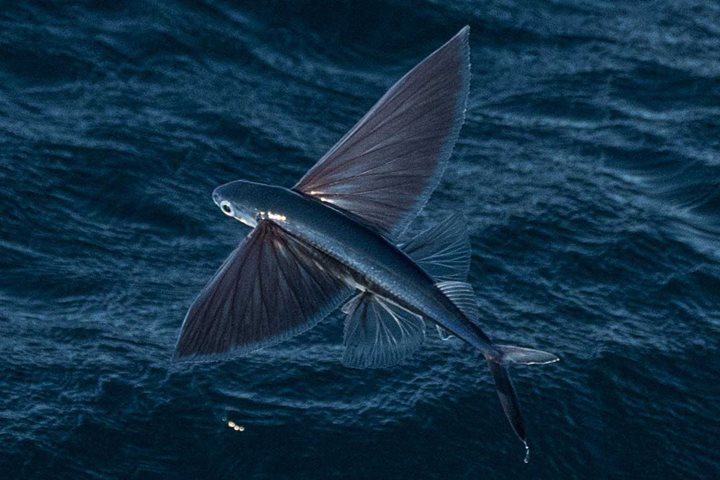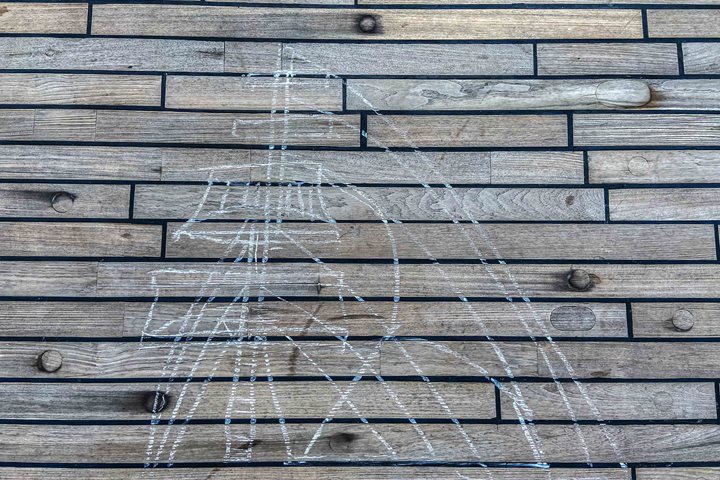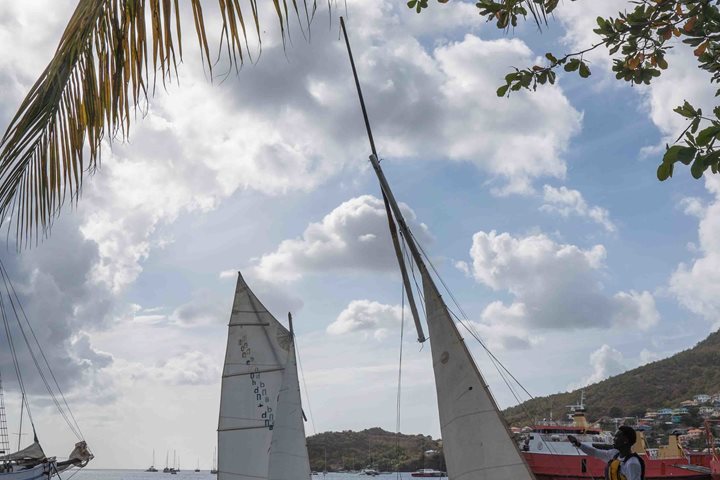We arrived at our docking birth in Dominica at 7 a.m. The sun had come up just a half-hour earlier and the day was clear and sunny. Prince Rupert’s Bay where we docked was a sparkling gem of light and silver flashes. Dominica’s lushness was immediately apparent. The forests are an emerald green and the highest peaks on the island—up to 4,500 feet—receive up to 30 feet of rain a year. That is 30 feet! We boarded minivans for the ride through the picturesque town of Portsmouth on our way to “Morne Diabolitin” National Park, the site of the rain forest. We divided into three groups. There are two species of endemic and rare parrots on Dominica, the Jacko and the Sisero, the latter is the larger and endangered with less than 1500 left in the wild. These Amazonian Parrots are protected and unique to Dominica, and today we saw about two, directly overhead in a very large “Gumeye” tree and one Sisero flew in front of us at the overlook on the Picard River. We saw many species of birds and our guide Honoré was even able to catch a Zandolin. These lizards are about 6 to 12 inches long and the male, which he caught and released, has a large light brown dewlap immediately beneath the throat. Honoré is an enormously talented bird caller and his ability to imitate the many species of birds from the Mountain Whistler to the Sisero to the Trembler is nothing short of remarkable.
After our excursion to the rain forest some of us visited Fort Shirley and some went snorkeling. After lunch Tom Heffernan gave a brief overview of Cabritz point and of Fort Shirley in the auditorium on the quayside. Fort Shirley was begun in 1774 and finally completed by 1820 and built almost entirely by slave labor. The fort is massive and spreads across most of the 200 acres of the Cabarets headland but it has only been possible to recover a small part of the original. The fort never saw action and existed principally as a deterrent. It was designed by the 18th century American architect Harrison to protect the Royal Navy at anchor in Prince Rupert Bay as the canons could sweep the entire area in front of the town of Portsmouth. There was another battery across the Bay and the two batteries made the bay inviolate. At its zenith the fort had 700 enlisted men and a contingent of the 8th West Indian Regiment, an English Regiment, made up of slaves.
The French forces under Admiral DeBouille took Dominica in September of 1778 only to loose it again in the Treaty of Paris of 1783. The Fort was abandoned in 1852/4 and lay derelict and in ruin covered by strangler figs, mahogany, gum, bay, and the assorted jungle flora until Lennox Honeychurch undertook restoration beginning in 1982.
After we finished our visit to the Fort some of us chose to walk the loop road. We left the dry forest and headed directly for our snorkeling expedition. The reef at the base of Fort Shirley where we are to snorkel is in good condition and abounds with enormous barrel sponges, some so large that you could swim inside them. I saw tangs, grunts, and damselfish, parrotfish, and wrasses and probably a lot more whose names I confess to not knowing. Tonight the fabulous hotel staff served us dinner on the lido deck and as always it was a five-star dinner.
We sailed into the waters of Iles des Saints at about 8 p.m. where we docked. Tomorrow morning we will reposition closer to the main island and leave for Le Bourg at 8:30. We listened to Peter and his wonderful piano for a bit and then we slowly drifted off to our cabins dreaming of the morrow and a good sleep.







